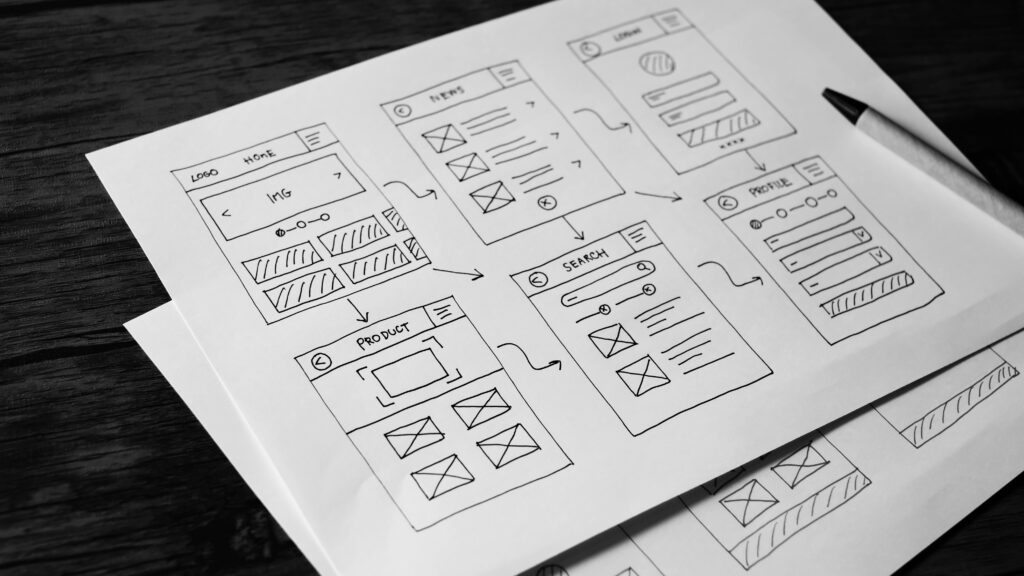Educators are in the education profession. Police are in the business of policing. Obvious, right? But what about product managers? Fundamentally speaking, we’re not really in the product management business, are we?
At our core, product managers are in the problem-solving profession.
Look at it this way: When you begin brainstorming with your team about ideas for entirely new products, what are those very first discussions about? Do you focus on resource allocation, marketing strategies, sales channels, and the coding language you’ll use to develop the product?
Of course not. You start by talking about people. You focus on their problems, needs, or wants, and then you begin thinking about the things you can create to help them.
So, if you’re going to start your product development with a focus on the people you envision your product eventually serving, you need the right framework for this type of creative thinking. One great framework, popularized by our friends at IDEO, is design thinking.
What is Design Thinking?
As IDEO U explains in its Foundations in Design Thinking course, design thinking is “a human-centered path to innovation” centered around “empathy for the people you’re trying to design for.”
What’s interesting about this framework is that it approaches the product manager’s early-stage thinking from a different vantage point—literally, because you start by be viewing the world from your customer’s point of view and trying to see their aspirations, wishes, concerns and frustrations.
How Design Thinking Can Unlock Creative Ideas and Solutions
There’s a great scene in the movie Dead Poets Society, where an unconventional English teacher (played by Robin Williams) tries to wake up his bored prep-school students by jumping up onto his desk. Why do such an odd thing? Because, as he explains to the class, “The world looks very different from up here. Just when you think you know something, you have to look at it in a different way.”
When you find new ways to view the world, or your target user’s daily workflow, you can uncover new insights and ideas that you simply wouldn’t be able to see by looking from your own vantage point and through your own personal lens.
As a PM, it can be tempting to start a new product’s journey by jumping straight into the analytical and tactical details. What features are we going to build? How much time do we have? Which teams should we assign to what roles? How much revenue will we need to generate in year one to call this thing a success?
But as the design thinking framework would tell you, this approach makes two fundamental mistakes right from the beginning:
1. You’re starting by thinking about the product itself—when you should be starting with the problem you’re trying to solve.
2. You’re focusing on your own organization and your internal needs and goals—when you should be focusing first on what your user needs and wants.
Tweet This:
“Design Thinking 101: Start with the problem you’re trying to solve and focus on your user needs.”
The Basic Design Thinking Approach
As you might notice from IDEO’s course series, this approach is very similar to the agile development framework with which you’re probably familiar. It’s iterative. It’s fast-moving, in the sense that you adjust your product (and your thinking) rapidly based on feedback from your market. And it is very team-oriented; nobody dictates a product’s specs from on-high in a design thinking environment.
Here’s how IDEO breaks out the phases of a design thinking approach to building a product (or creating anything):
1. You’ll frame a question (or several questions). What problem is our typical customer facing, or what goal or desire can we help them achieve?
2. You’ll gather inspiration. Let’s look around and try to see things from a new vantage point, ideally from our customer’s view, to inspire new thoughts that might help us figure out what these people really need.
3. You’ll generate ideas. Anything goes here, so everyone should feel free to throw out suggestions that might seem too difficult, too expensive, or even downright nuts. That’s okay at this stage. Let’s move beyond the obvious and look for a real innovation.
Note: We’re halfway through the six phases of the design thinking framework, and we haven’t discussed product details, features, organizational goals, or resource constraints. Our focus here has been entirely on empathizing with our customer and trying to find ways to improve some aspect of their lives.
4. You’ll make your ideas tangible. Now that we’ve decided on solutions to real problems or desires that real people are experiencing, let’s build some rough prototypes and push them out there to let a sample of our users tell us whether we’re onto something.
5. You’ll test to learn. Okay, what are our early users saying about our prototypes? What’s working, and what isn’t? Are we striking a real emotional cord here (an indication we’re onto something!), or are our users only finding our product “satisfactory” (an indication we still have work to do, starting with adding some customer delight)?
Note: As you can see, this overlaps nicely with agile thinking. You prototype, you put products into your users’ hands as quickly as you can, and you iterate based on their feedback. In other words, design thinking might represent a framework you haven’t used before in your product management career, but you’ve probably used elements of it.
6. You’ll share the story. Our product is resonating with our users. This is great! We found a real issue they were facing, and we created something to help them solve that issue. Now it’s time to share the story—but not with a mechanical, “This product has features X, Y, and Z” message. Let’s craft a human story that will inspire our target users to act. We build it with people in mind, after all, so we should talk to them like real people.
Start Your Design Thinking Education
This post has offered just a high-level introduction to design thinking, of course, and there’s a lot more to learn before you can begin implementing this human-centered approach to product management across your organization.
So we recommend you start by looking into the IDEO U Foundations of Design Thinking certificate course.
Do you have any experience with design thinking? Please share your thoughts in the comments section.


